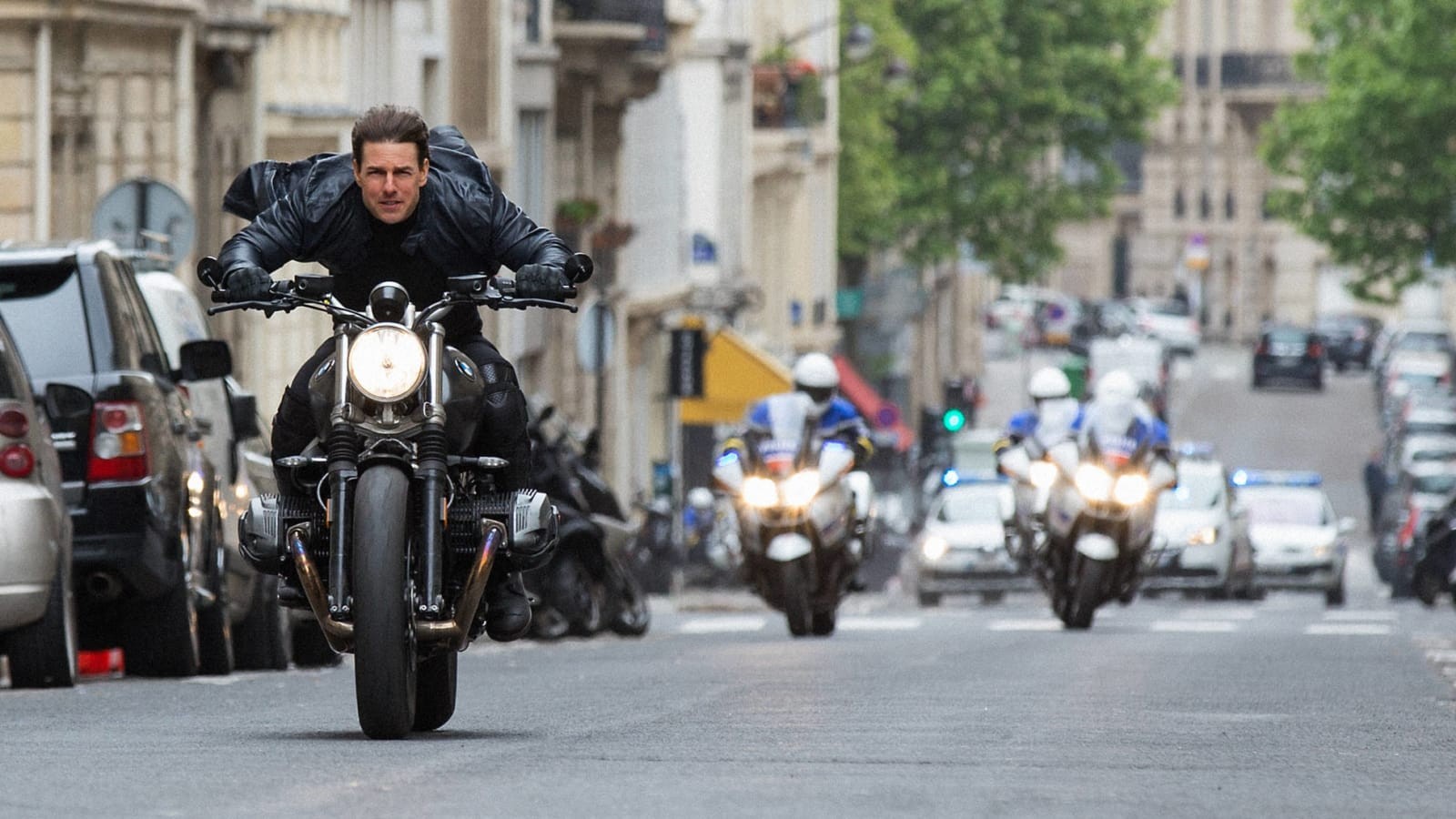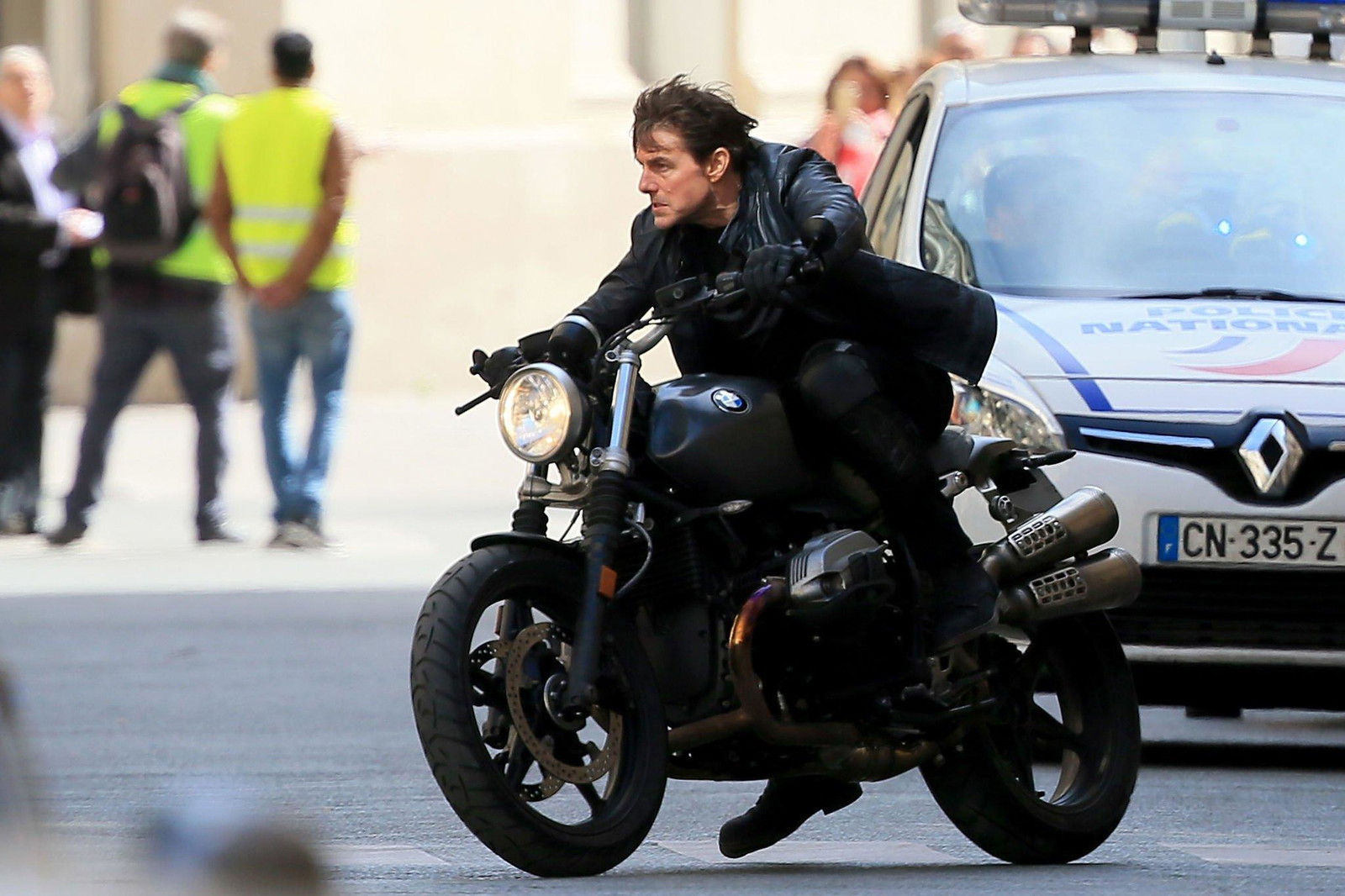When it comes to Hollywood action sequences, few can rival the adrenaline-fueled stunts performed by Tom Cruise. Known for his daredevil antics, Cruise has a penchant for performing his own stunts, often pushing the boundaries of what’s considered possible.
However, one aspect of his on-screen bravado has sparked a debate: his refusal to wear a helmet during high-octane motorcycle scenes. Is this a case of a badass action hero living on the edge of a potentially disastrous influence on impressionable viewers? Let’s delve into the heart of this controversy.
The Helmet-less Hero: A Signature or a Risk?

Tom Cruise’s helmet-less motorcycle stunts have become a signature element of his action-packed films, from the Mission Impossible series to Top Gun. The reason behind this choice is twofold.
Firstly, it’s a testament to Cruise’s skill and dedication. He insists on performing his own stunts, and the absence of a helmet is a clear signal to audiences that it’s really him on the bike. Secondly, it’s about audience appeal. The image of Tom Cruise, hair flying in the wind as he speeds along on a motorcycle, has become an iconic symbol of his action-hero persona.
However, this decision has been subject to controversy. Some manufacturers, such as Honda, have reportedly backed out of providing motorcycles for Cruise’s films due to his refusal to wear a helmet.
The Stunt That Shook The World

In Mission Impossible: Dead Reckoning Part One, Cruise took his daredevil reputation to new heights by performing what’s been billed as the biggest stunt in cinema history. On the first day of filming, Cruise rode a motorcycle off a cliff in Norway, launching into a base jump.
The stunt was the culmination of years of planning and intense training, including over 500 skydives and 13,000 motocross jumps. Yet, despite the extreme risk, Cruise once again chose to forgo a helmet. This decision was not taken lightly, with the production team using 3D models to predict how Cruise would fly through the air during the stunt to film it effectively.
The production team released behind-the-scenes footage of the stunt, which has been viewed over 13 million times on YouTube and 30 million times in the film’s trailers, sparking anticipation among fans and critics alike. The risk was so high that the outcome could have been injury, death, or both.
Bad Influence or Just Badass?

While Cruise’s helmet-less stunts undoubtedly add to the thrill of his movies, they also raise concerns about the message they send to viewers. Some argue that these scenes glamorize reckless behavior, potentially influencing young fans to emulate their hero’s disregard for safety. However, others contend that audiences can distinguish between movie stunts and real-life safety. As Cruise himself stated in an interview with Entertainment Tonight,
“You have to be razor sharp for something like that; I don’t want to drop that and shoot other things and have my mind somewhere else.”
Yet, the debate continues, with critics pointing to the potential for copycat behavior and fans defending the stunts as pure entertainment.
Whether you view Tom Cruise as a badass action hero or a potentially harmful influence, there’s no denying his commitment to delivering unforgettable cinematic experiences. His helmet-less motorcycle stunts testify to his dedication and skill, even as they spark debate about their potential impact.
After all, in the words of Cruise’s co-star Simon Pegg,
“He’s the unstoppable force. He never gives up… but he’s also smart about it.”
As we continue to marvel at his on-screen exploits, it’s crucial to remember the line between movie magic and real-world safety.
Source: Hotcars

